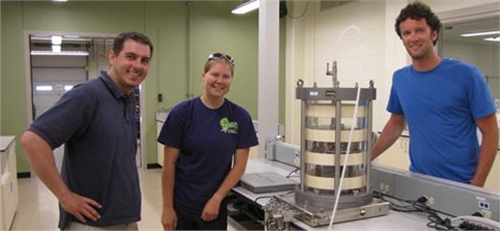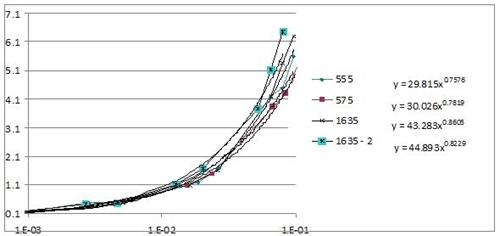Resonant Column: Colorado School of Mines
Colorado School of Mines in Golden, Colorado, is a global leader in research and the advancement of technology, specifically in the areas of earth, energy, and the environment. Its Division of Engineering consists of an interdisciplinary team of students and faculty in the areas of Civil, Electrical, and Mechanical Engineering. Specific examples of research areas include structural dynamics, geotechnical and structural engineering, sensing, communications and controls, energy systems and power electronics, material mechanics and thermal-fluid systems, and bioengineering. Many research centers also reside within the Engineering Division, providing opportunities for students and faculty to interact while they formulate and realize society's most significant interdisciplinary advances.
Read more below or Click here to download the case study.
THE PROBLEM
Dr. Wang’s research team is interested in modelling the dynamic behaviour of soil-structure infrastructure systems where the contributions of both the manmade and natural earth construction materials must be considered. To do this, it is necessary to develop, calibrate, and validate numerical modeling procedures for incorporating the unique inertial, elastic, and dissipative properties of all of the component materials.
| Of these dynamic mechanical properties, the dissipative properties of soils are perhaps the most difficult to quantify and numerically represent. There is no generally accepted consensus for modeling multiple intrinsic damping properties in one infrastructure system, nor have proposed techniques been the focus of rigorous experimental validation.
|
THE SOLUTION
It is therefore essential to the calibration and validation process that CSM obtain accurate measurements of the strain dependent intrinsic damping properties of their soils such that, they have confidence in their proposed numerical modelling techniques. CSM are using the resonant column apparatus to obtain macroscopic, element level measurements of the intrinsic damping characteristics of multiple standardized sands. The data are being generated in the form of viscous damping ratio, ICON, versus shear strain, ICON, curves at varying effective stress levels. CSM aim’s to determine these damping ratio curves for three different types of standardized sands such that they have two curves with similar dissipative properties and one curve distinctly
| different from the other two.
These three sands with a range of damping properties will then be used to construct simple stratified foundation models subjected to ground motions in a geotechnical centrifuge. The experimentally observed accelerations from these centrifuge experiments will be compared to a numerical model developed using the intrinsic damping curves from the GDS resonant column device. The numerical model will be calibrated and validated by using the resonant column data and the centrifuge data, thus providing an experimentally validated means for multiple intrinsic damping characteristics in soil-structure dynamics.
|

Fig. 1 CSM Graduate Student Research Team
RESULTS
CSM have thus far obtained multiple damping curves for multiple standardized sands (refer below to Fig 2; the numbers refer to the standardized sand labels). CSM are comparing these macroscopic data to microscopic data generated from particle-scale analysis. This has led them into further avenues of investigation, involving linking the macroscopic, element-scale damping properties of soil as measured by the resonant column, to the microscopic, particle-level characteristics of the individual soil grains as measured by quantitative mineralogy scanning techniques.
| CSM are planning on using the resonant column apparatus to perform tests in the near future that examine these linkages between continuum and particulate perspectives of soil materials, leading to a deeper understanding of energy dissipation in soil materials and how these particle-level characteristics can be incorporated into modelling soil materials on the scale of civil engineering infrastructure systems. The resonant column will be a valuable tool in investigating these issues that will contribute towards a more fundamental framework for understanding soil behaviour.
|

Damping Ratio v Shear Strain (%)
Fig 2. Shows the results of multiple damping curves for multiple standardized sands (the numbers refer to the standardized sand labels).
CONCLUSION/TESTIMONIAL
Dr. Wang says… “Our research team has been very pleased with the GDS Resonant Column thus far and the ongoing, enthusiastic level of support and service as provided by the GDS team. The column has performed very well for its original research purposes and is now in its new home in the newly constructed Geotechnical Research Engineering Laboratory in the Colorado School of Mines. The column helps enable a wealth of potential research opportunities, and it will be an integral part of the growth and development of our research program.”
Useful Links:
Products Feature in the Case Study